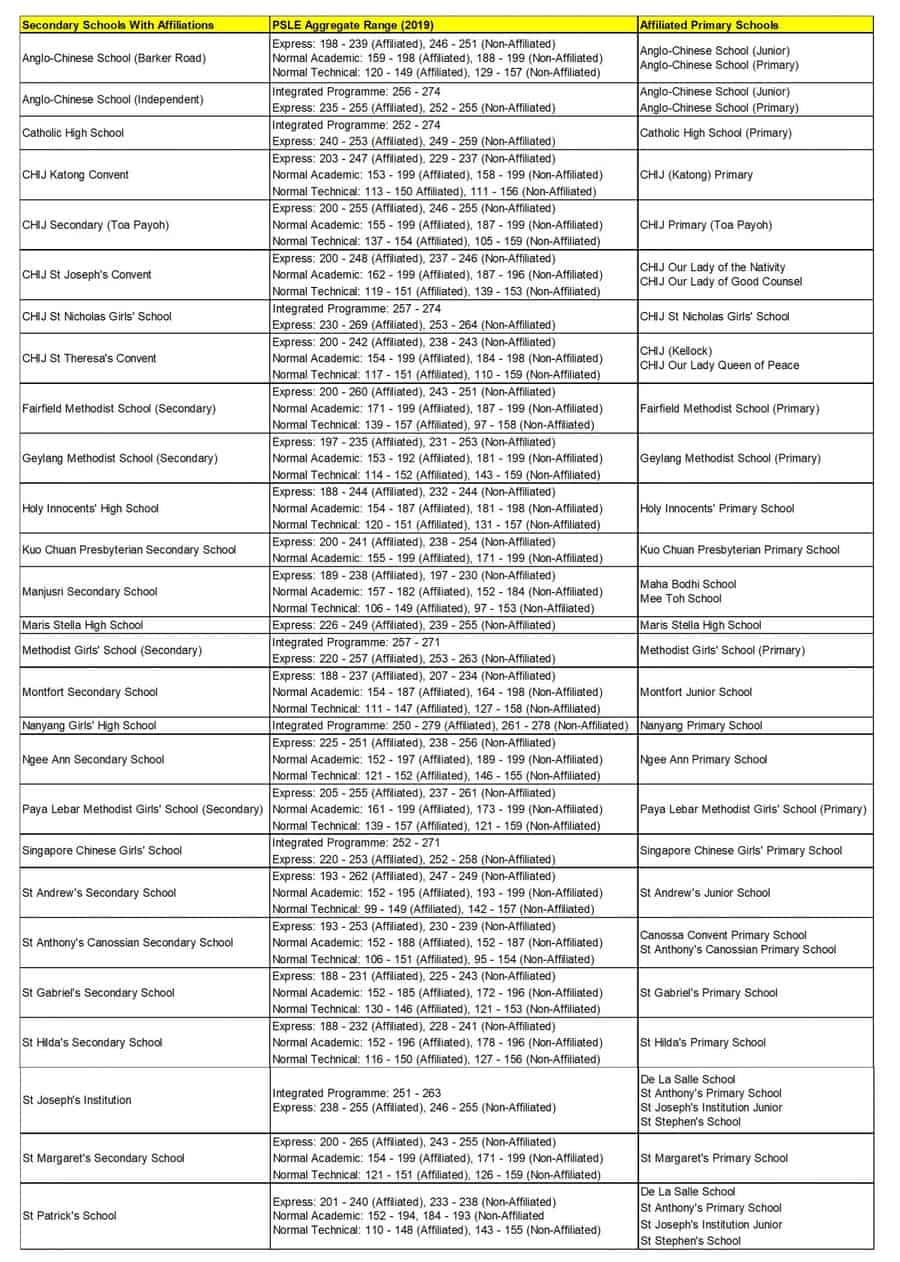Choosing A Primary School: Affiliations Are Better?
Submitted by KiasuEditor

St. Joseph’s Institution Junior, a primary school with two affiliated secondary schools.
In Singapore, there are currently 186 primary schools to choose from, and about a fifth of these have an affiliated secondary school—or even two.
Among the primary schools with affiliations, many are well known and considered popular. If you are not alumni, and have no religious or cultural ties to these schools, your options are to volunteer with the school or as a grassroots leader for priority registration, i.e. registration at Phase 2B.
>> Learn about P1 registration phases and find out more about parent volunteering for P1 registration.
Alternatively, you can wait for Phase 2C of the registration process, where home-school distance will be the deciding factor. Either way, you should be prepared that demand will be high, and balloting for places is a possibility.
Below, we look at three reasons why affiliated schools appeal to parents, so that you can make a better decision on whether an affiliated school will be right for your child.
A Values-First Education
If religion is important to you, you might feel more comfortable with an affiliated school where school values will likely be aligned with yours. For instance, a Christian school will emphasise a gospel-driven life, underpinned by such virtues as kindness and humility. Further, in the secondary school years, you can also expect that sex education will be in line with religious teachings.
Of course, values are taught in all schools — secular schools will have their own set of values, aimed at producing students who will be an asset to any community. But in some schools, it will be clearer that character comes first, while other schools may appear to prioritise academic results. The best way to gauge a school’s value system? Talk to parents who already have children in the school.
>> Learn how to spot a school with a healthy culture.
A Strong School Network
If you still have close ties to your ex-schoolmates, you will relish the idea of being able to extend these bonds to the next generation. But even if you don’t, you may remember your school days fondly, and hope for your children to enjoy the same.
Schools with a loyal and active alumni network will tend to have involved parents who are willing to support the school, either financially or by volunteering their time. These communities are usually caring and welcoming, where parents look out for all children, and not just their own.
Some parents view school networks in a more worldly sense — you may have heard that attending certain schools will ensure that your child is well-connected later in life.
You will need to decide what matters most to you when it comes to your child’s education. A recommended approach is to consider a school holistically, and choose a school where your child can feel safe, happy, and fulfilled.
>> Class WhatsApp groups are a great way to build school-based networks, especially in the lower-primary years. Find out how you can make them work for you.
Easier Entry To Secondary School
If it’s not a religious environment or rock-solid network that you’re after, then the prospect of a less-stressful entry into secondary school can be enticing.
Here is something that you should know: since 2019, the Ministry of Education (MOE) has reserved 20% of all places in secondary schools with affiliated primary schools for non-affiliated students.
In some secondary schools, about 80% of the affiliated cohort will manage to meet the entry requirement. In other secondary schools, less than 50% of the affiliated cohort will qualify for entry, or affiliated students may choose to attend other schools.
Schools such as Maris Stella are open about the number of places typically taken up by affiliated students, which helps parents to better manage their expectations about the ease of entry. If you are curious and this information is not available on a school’s website, simply check with parents from recent Primary 6 cohorts, and they can probably give you an updated figure.
Also, do note that 2021 marks the year where the old PSLE T-score will be replaced by new Achievement Levels. (Read our guide to the new PSLE scoring system if you need a refresher.)
The MOE has published a preliminary guide to secondary school cut-off points in 2021. The indicative cut-off points for individual secondary schools should be released in the first half of 2021.
Naturally, parents with children in affiliated schools are concerned about what cut-off scores will look like in 2021 — the MOE has addressed this question on its website, saying that affiliated schools will continue to set their minimum requirements for affiliated students.
To give you a better idea of the standards that currently apply at affiliated secondary schools, refer to the table below. For the most updated and accurate information on each school, please conduct your own research using MOE’s School Finder service.

Have questions or a story to share? Join the conversation about affiliated schools and their cut-off points on our forum!